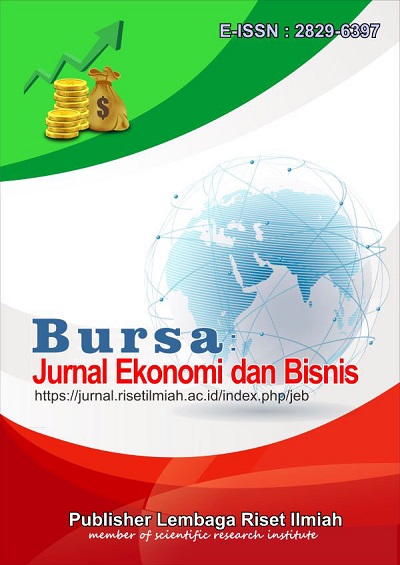Analisis Dampak Pernikahan Dini Dan Tantangannya Terhadap Human Capital Di India: Hambatan Tersembunyi Dalam Pembangunan Ekonomi
DOI:
https://doi.org/10.59086/jeb.v4i2.720Keywords:
Child marriage, Poverty, education, human capital, IndiaAbstract
Child marriage in India is a serious issue involving individuals under the age of 18, often occurring without the full consent of the child. This practice negatively impacts the quality of human resources and national productivity, hindering children's access to education and health. With over 1.5 million cases of child marriage among girls each year, India accounts for one-third of the total child brides globally. This study aims to understand the factors causing child marriage and its impact on education and the quality of life of children. The method used is a quantitative approach with linear regression analysis to test the influence of child marriage on poverty and economic growth. The results indicate that child marriage contributes to the intergenerational cycle of poverty, reducing individuals' potential to participate in economic development. This research is expected to provide a clear picture of the challenges faced and serve as a basis for efforts to reduce child marriage, allowing children better opportunities for their future.
References
Basha, C. (2016). Child marriage: Causes, consequences and intervention programmes. International Journal of
Humanities and Social Science Research, 2(11), 19–24. Jiwami, D. J. (2019). Kerjasama Unicef-Unfpa Dalam Mencegah Perkawinan Anak Di in- Dia Tahun 2016-2019. Jurnal Cahya Mandalika, 745–758.
Khan, M. N., Khanam, S. J., Khan, M. M. A., Billah, M. A., & Akter, S. (2024). Exploring the impact of perceived early marriage on women’s education and employment in Bangladesh through a mixed-methods study. Scientific Reports, 14(1), 1–12. https://doi.org/10.1038/s41598-024-73137-w
Kumar, S. (2016). Measuring child marriage from census and large scale data systems in India. Demography India, 45(1&2), 59–76. http://demographyindia.in/article_document/17/283115.pdf
Nath, B. S. (n.d.). " Breaking Barriers : Tackling Child Marriage , Gender Inequality , and Social Injustice in the Labor Market ". 1–12.
Nawir, F., Farhan, A., & Megarezky, U. (2024). Kualitas sumber daya manusia sebagai aspek fundamental dalam menunjang perekonomian. 4(2), 330–341.
Nizar, N. I., & Nazir, A. (2020). Faktor Human Capital Pada Pertumbuhan Ekonomi Kreatif. Jurnal Mandiri : Ilmu Pengetahuan, Seni, Dan Teknologi, 4(1), 52–65. https://doi.org/10.33753/mandiri.v4i1.103
Paul, P. (2020). Child Marriage Among Girls in India: Prevalence, Trends and Socio-Economic Correlates. Indian Journal of Human Development, 14(2), 304–319. https://doi.org/10.1177/0973703020950263
Rasmussen, B., Maharaj, N., Karan, A., Symons, J., Selvaraj, S., Kumar, R., Kumnick, M., & Sheehan, P. (2021). Evaluating interventions to reduce child marriage in India. Journal of Global Health Reports, 5, 1–15. https://doi.org/10.29392/001c.23619
SHELEMO, A. A. (2023). No Titleیییی. Nucl. Phys., 13(1), 104–116. Tedjo, A. K., Ramadhan, M. D., Dirgantara, M. D., & Bahari, R. A. M. (2021). Tantangan Budaya dalam Mewujudkan Kesetaraan Gender di India dan Solusinya. Jurnal Hubungan Internasional, 14(1), 142. https://doi.org/10.20473/jhi.v14i1.13310
UNICEF. (2023). Ending Child Marriage, a Profile of Progress in India, 2023 updates. 1–30. https://data.unicef.org/resources/ending-child-marriage-a-profile-of-progress-in-india-2023/
Downloads
Published
How to Cite
Issue
Section
License
Copyright (c) 2025 Cahaya Latifa, Destira Putri Andita, Muhammad Farrel Shidqi, Faisa Syahda Aufa, Oliviani Yulianti, Ratu Salza Alya Sabila, Khoirul Irpani, Fadia Febrianti, Derris Desmawan

This work is licensed under a Creative Commons Attribution 4.0 International License.
You are permitted to adapt and share scientific works in this journal as well as
Commercial use

This work is licensed under a Creative Commons Attribution 4.0 International License.















